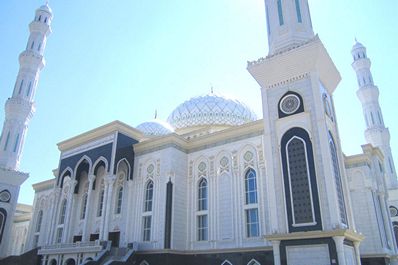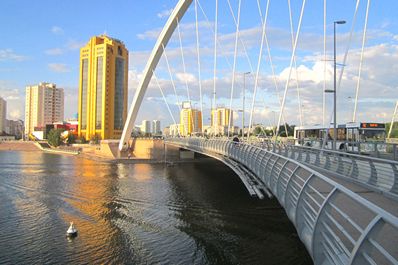Astana History

Astana was proclaimed the capital of Kazakhstan on 10th December 1997 by the President of Kazakhstan and the Parliament. The international presentation of Astana, as the new capital of Kazakhstan, was held on 10th June 1998. Today the city's territory is over 200 sq. km.
In 1999 Astana was awarded with the medal and title of City of Peace by UNESCO. The first capital of Kazakhstan was Orenburg (now in the Russian Federation) in 1920 then it was moved to Kyzylorda in 1925. The construction of the Turkish railway was the main reason for transferring the capital to Alma-Ata in 1929.
The capital was moved from Almaty to Astana for economic, ecological and geographical reasons. Almaty is too far from the actual geographic center of the country. The population in Almaty is close to 1.5 million with no further prospects for accommodation. In fact the city is fairly overbuilt, densely populated and has no spare areas for development. Transport is also a problem. Year in year out the ecological condition of the 'southern capital' deteriorates dramatically. It is one of the most polluted cities in Kazakhstan. Astana was chosen as the best alternative, based on a nation-wide study taking into account 32 parameters including socioeconomic indices, climate, landscape, seismic condition, natural environment, engineering and transport infrastructure, construction facilities and work force.
Decisive advantages of Astana included its overall condition, territory, central location, proximity to major economic centers and arteries, potential to increase its population to 400,000, stable utility supplies, well-developed transport infrastructure and balanced natural environment.
Astana's history starts in 1830 with the construction of the Akmola fortress in Karautkul to make it 'the main town of the county of the Siberian Kyrghyz on the Ishim River'. The fairly advantageous position of the city was clear as early as 1863 in an abstract from the Geographic and Statistical Dictionary of the Russian Empire, St. Petersburg. It describes how picket roads and lines connected this geographic center to Kargaly in the East, Aktau fort in the South and through Atbasar to Kokchetav in the West.
According to other sources the Akmola steppes have always seen inter cultural exchanges. In the middle of the 1st millennium BC Herodotus mentioned a route through the Great Steppe (the later Great Silk Road) that ran through these steppes. Caravan routes developed prosperous trade and handicrafts in cities traditionally engaged in cattle breeding and farming. These were obviously cradles of civilization.
In the 19th century Akmola was an important commercial and economic center in the steppe. It officially became a district city on 16th July 1863. Akmolinsk region headquartered in Omsk was created on 21st October 1868 according to the Provisional Administrative Regulation in the Orenburg Steppe Region and the General Governorship of Western Siberia. At the time Omsk was the capital of the General Governorship of Western Siberia and Akmola region may have been named so because its center was intended to become Akmola. This is supported by the fact that, in 1879 major general Dubelt proposed to build a railway between Tyumen and Akmolinsk to the Ministry of Communications of Russia. In the course of the first 30 years of its existence the population of Akmola numbered a trifle more than 2,000 people.
However over the next 30 years the city's population became thrice as large according to Volosts and Settlements of the Akmolinsk region, St. Petersburg 1893. Akmolinsk was an uyezd (district city) with a 6,428 strong population, 3 churches, 5 schools and colleges and 3 factories. This was the first stage of the development of the city. The second stage, that of the Virgin Lands, had a major impact on the destiny of the city.





